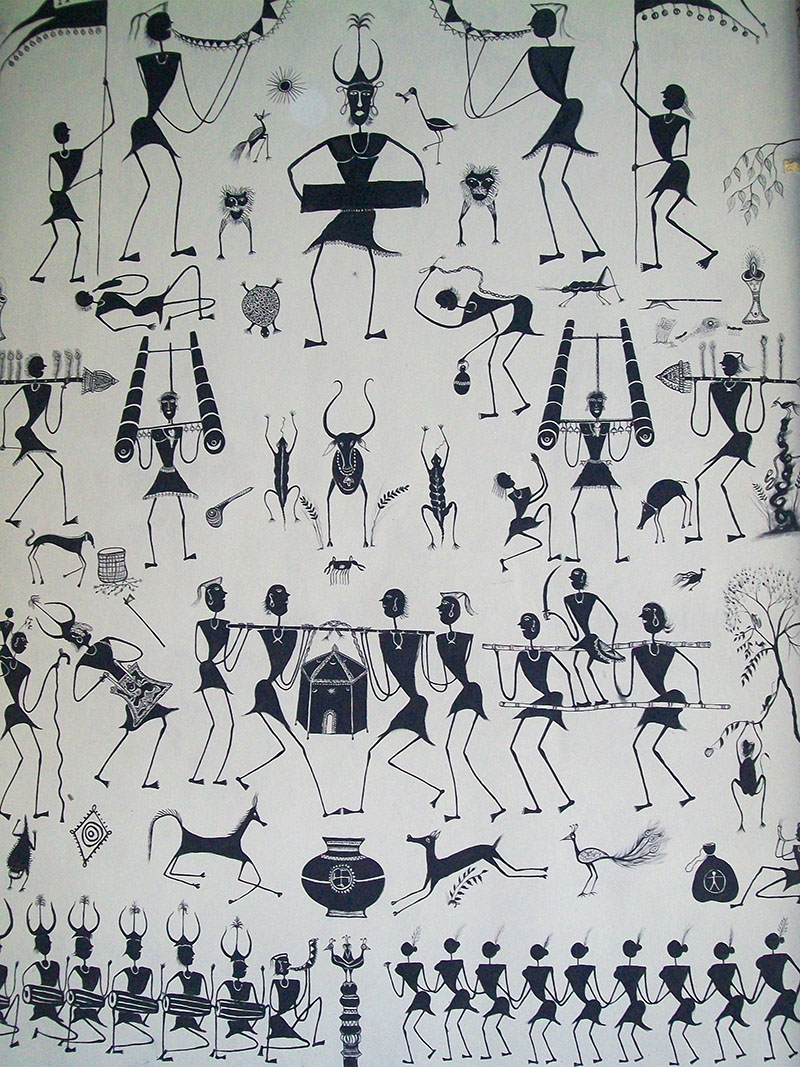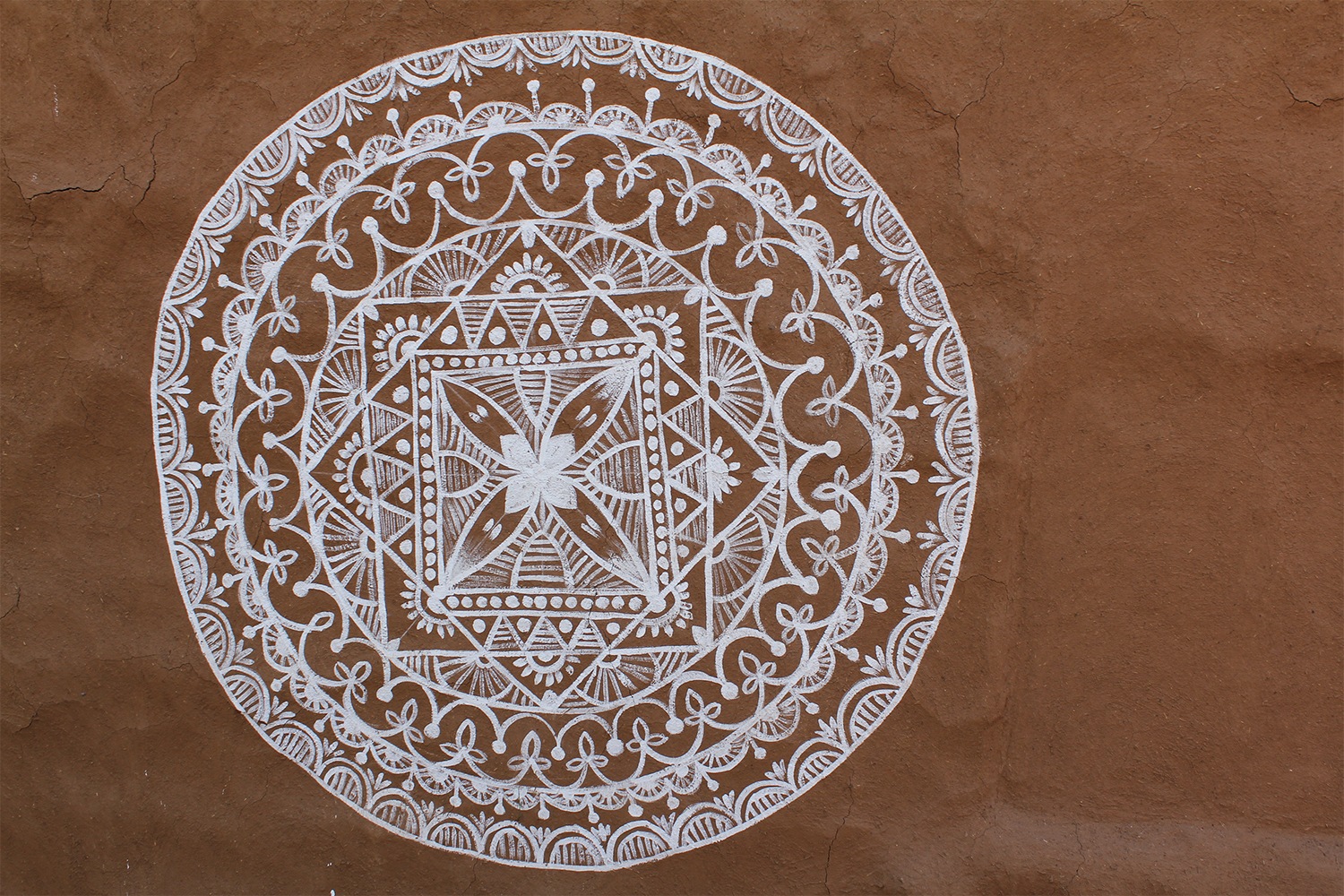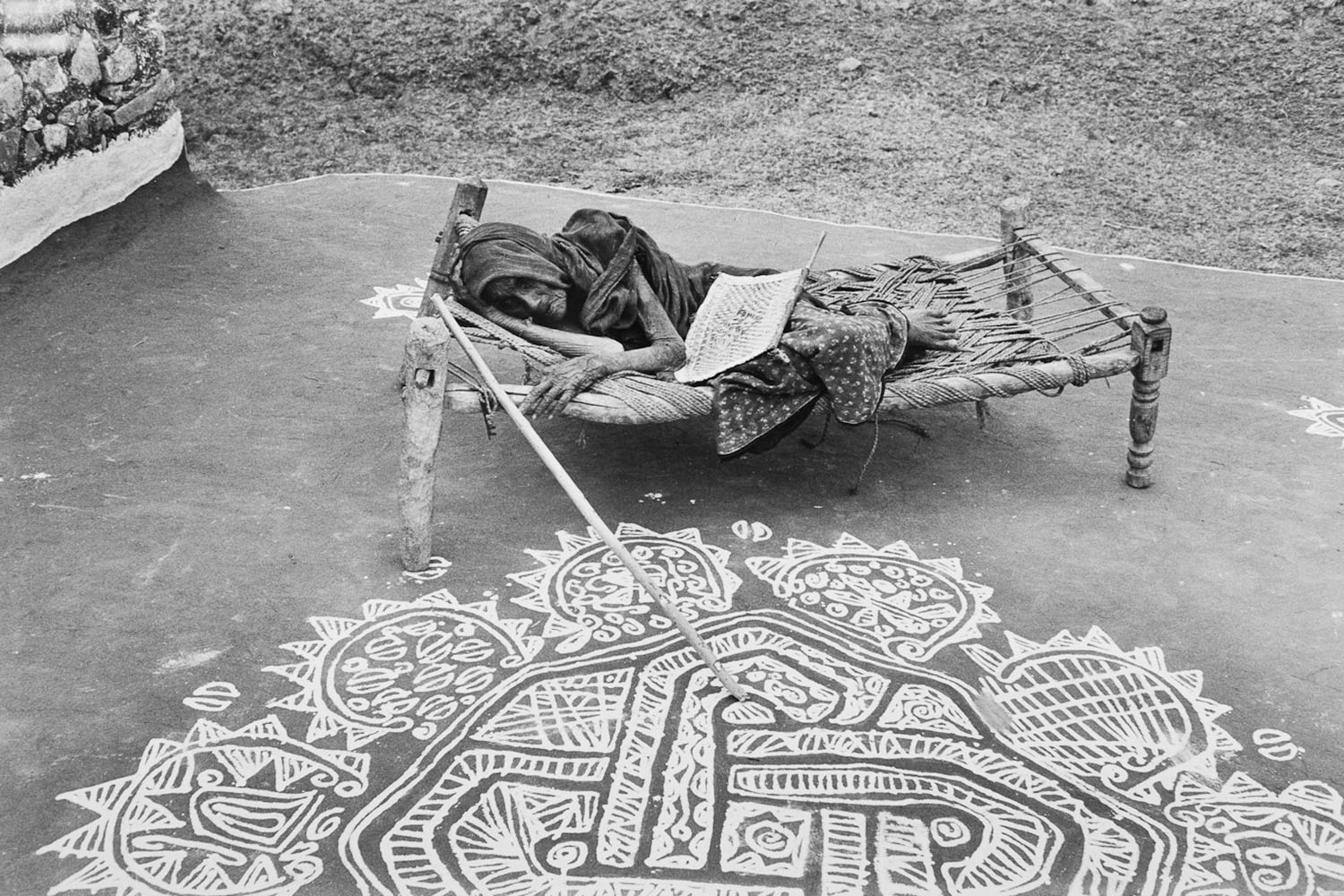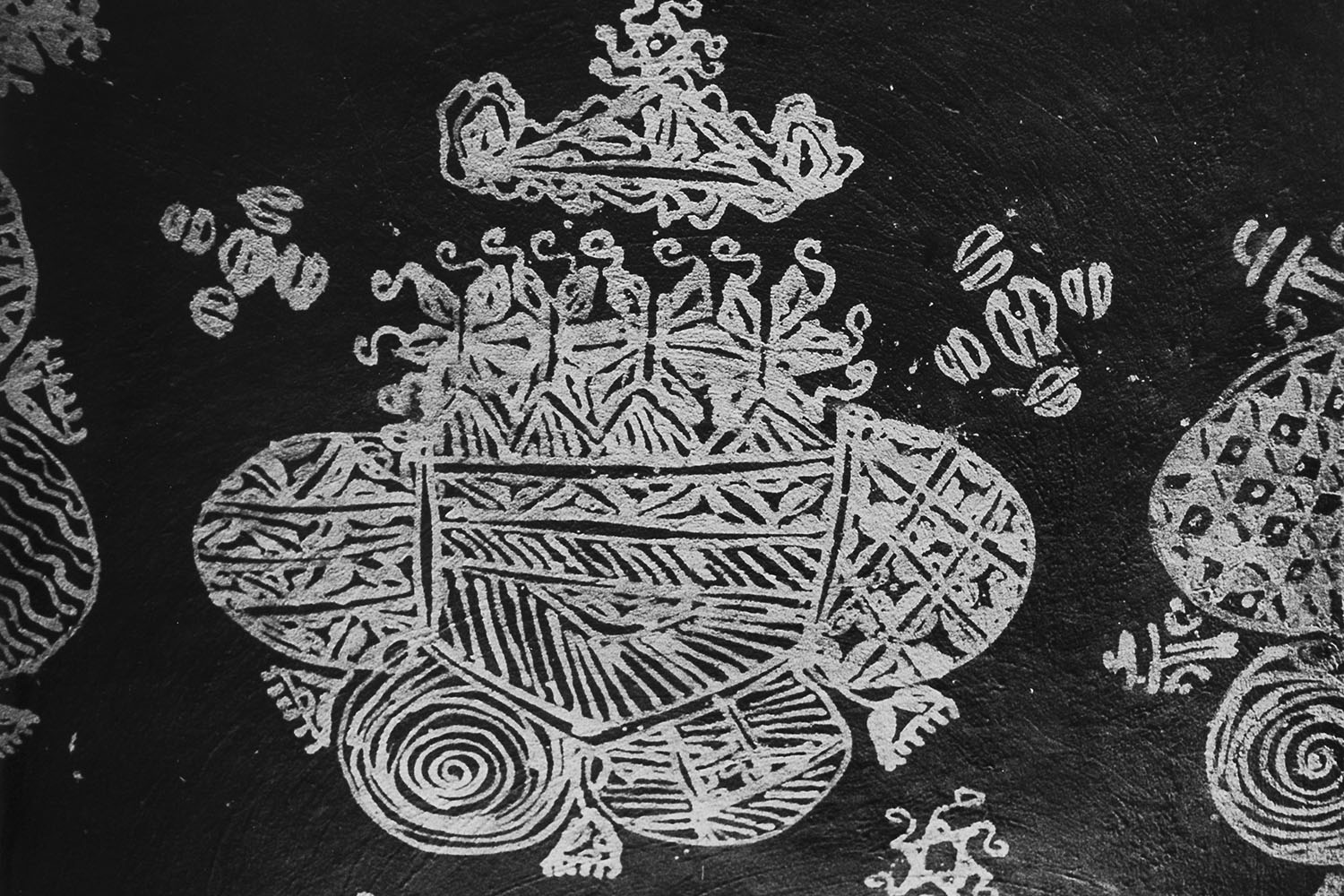ARTICLE
Mandana
Within the Meena community, mandana are also used to adorn important spaces or add a decorative flourish in the interiors of homes. The granary — locally known as the kotha or kothi — is an important space in a Meena home and is decorated with geometric and floral mandana patterns. The hearth – also known as the chulha – is another space that is often decorated with mandana. A mandana made in relief and carved into the clay surface may further be embellished with mirrors, beads and coloured glass.
While floor mandana have designs specific to an occasion, wall mandana use a wider array of motifs, inspired by wildlife or the social life of the community, as seen in motifs such as gujar-gujari (man and woman), bullock and camel carts. Unlike the mandana in Rajasthan, which is primarily made in white and red, more colours have been introduced in the designs made in Madhya Pradesh.
Like other mural painting traditions that originated on mud surfaces, the mandana technique also faces a challenge with a decline in the number of mud houses. Local artists, however, have adapted their designs and motifs to paper and, in some cases, have also experimented with depicting modern themes using traditional techniques.
Bibliography
Our website is currently undergoing maintenance and re-design, due to which we have had to take down some of our bibliographies. While these will be re-published shortly, you can request references for specific articles by writing to hellomapacademy@map-india.org.










